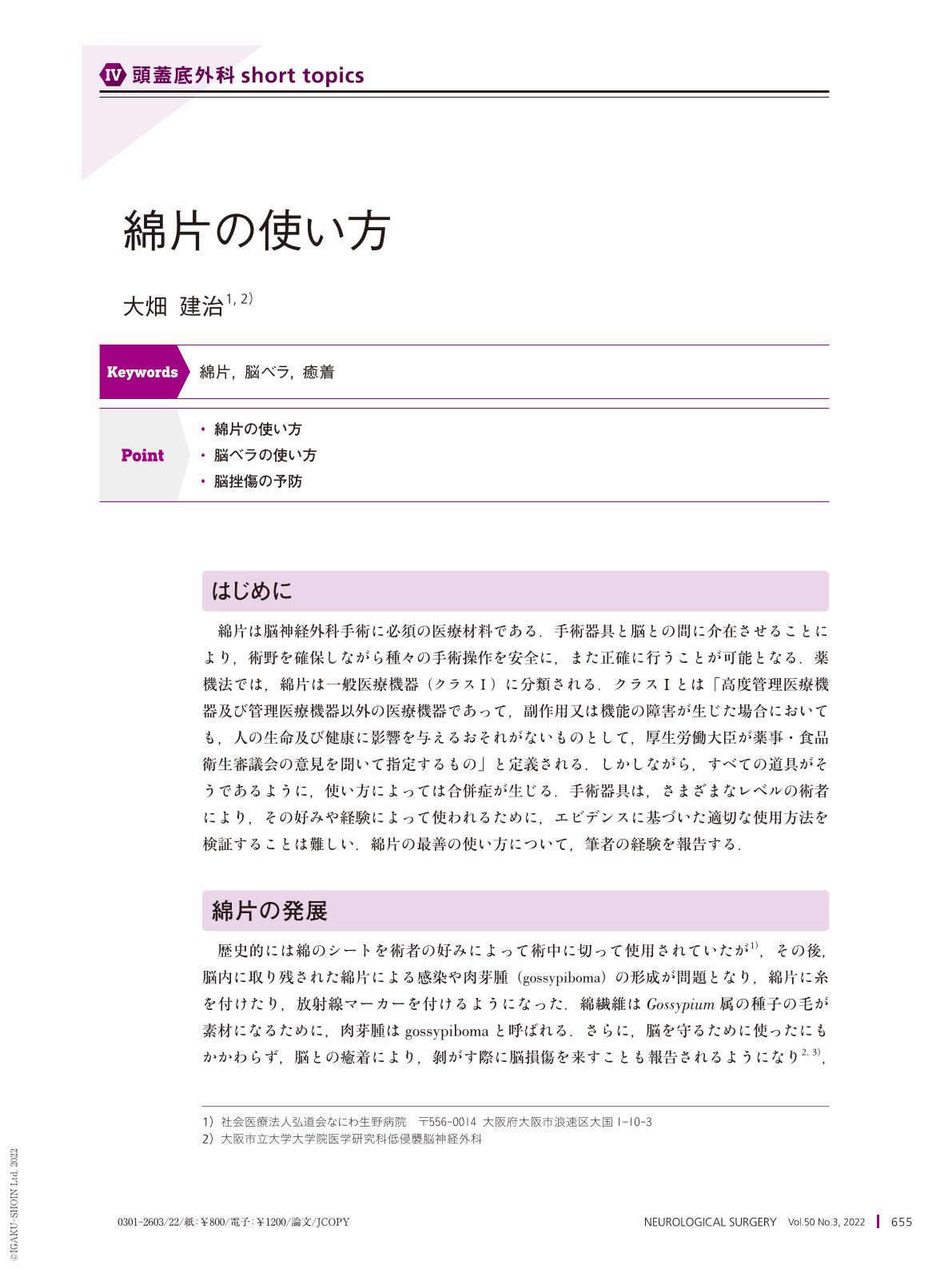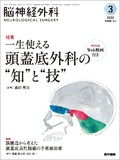Japanese
English
- 有料閲覧
- Abstract 文献概要
- 1ページ目 Look Inside
- 参考文献 Reference
Point
・綿片の使い方
・脳ベラの使い方
・脳挫傷の予防
The neurosurgical patty is used in almost every neurosurgical procedure. It has a diverse range of functions, including tissue protection, tissue manipulation, fluid management, and hemostasis. The author prefers to use two different types of patties; one is hard, in consistency with a thickness of 0.8 mm, and the other is soft, with a thickness of 0.2 mm. The former is used in retracting the brain with a spatula, and the latter for manipulating very delicate parts. To avoid adhesion at the interface between the patty and the brain, a collagen sheet is inserted under the patty. Care should be taken to avoid any iatrogenic damage to the brain surface, especially if the patty is placed under a spatula for a prolonged period. In such a situation, collagen sheets may remain. In tumor surgery, the patty is very useful for dissecting the gliotic layer of the brain from a relatively hard tumor, such as a large meningioma with pial invasion. Blunt dissection of the tumor by rotating the patty on the tumor surface, along with the gliotic layer, under the microscope, enables quick and accurate dissection of the tumor. Since surgical instruments are used by surgeons with varying levels of experiences, it is difficult to verify their correct evidence-based use. Here, the author's experience with the best use of the neurosurgical patty is described.

Copyright © 2022, Igaku-Shoin Ltd. All rights reserved.


